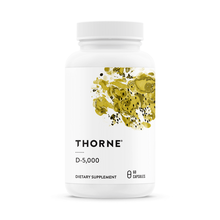VITAMIN D OVERVIEW
Vitamin D deficiency is now recognized as a pandemic, affecting an estimated 1 billion of the world’s population.
Most of us know the importance of vitamin D intake for strong, healthy bones. Even so, a resurgence of rickets, the childhood bone-weakening disease, has been seen in industrialized countries in recent years.
According to the Harvard School of Public Health, vitamin D deficiency is of great concern because research conducted over the last decade, suggests that vitamin D plays a much broader disease-fighting role as was once thought.
WHAT is VITAMIN D?
Vitamin D is a fat-soluble vitamin that is naturally present in very few foods. There are two different supplemental forms of vitamin D: D2 and D3.
D2, also known as ergocalciferol, is the form made by mushrooms from exposure to sunlight, while D3, also known as cholecalciferol, is the type that’s made in your skin from the sun or from fish consumption. Both D2 and D3 must be converted, ‘activated’ to the hormone calcitriol before they can be used by the body. Both forms can be manufactured for supplements; although the D3 is the one more commonly used. A number of studies show that D2 should no longer be used because it is not as easily converted by the body.
WHY is it IMPORTANT?
Vitamin D is one of the most important vitamins for overall health; yet it’s most important, signature role is that of maintaining bone health (osteopenia & osteoporosis) and preventing childhood rickets.
Vitamin D, especially taken with vitamin K, has also been found to enhance immune system response, and improve cardiovascular health and increase bone density, especially in postmenopausal women.
BEYOND BONE BUILDING
The crucial link between strong, healthy bones and vitamin D was made many years ago; however recent research suggests Vitamin D also plays a crucial role with the immune system, healthy muscle function, cardiovascular health, brain health, insulin regulation, and cancer prevention, to name just a few.
WHO IS AT RISK for VITAMIN D DEFICIENCY
The following groups of people are at increased risk for vitamin D deficiency –
- People with naturally, dark skin. The melanin in their skin adversely affects UV penetration.
- People with little or no sun exposure.
- Breast-fed babies, as breast milk contains little vitamin D
- People suffering from: celiac’s disease, cystic fibrosis, inflammatory bowel disease, liver disease, obesity and renal disease
- Older adults in nursing and retirement homes
- Vegans (soy-based products, fortified with vitamin D, are possible options)
HOW MUCH do I NEED?
According to the Institute of Medicine (IOM) guidelines, the amount is dependent on a person’s age. Following is an RDA and an upper-limit range:
- Infants – Parents should consult with a pediatrician.
- Children (1-3 years) 600-2500 IU daily
- Children (4-8 years) 600-3000 IU daily
- Persons (9-70 years) 600-4000 IU daily
- Persons (70+) 800-4000 IU daily
NOTE: The very best way to determine your individual vitamin D needs is to have your doctor check your levels with a simple blood test called 25 – hydroxyvitamin D. Serum levels below 50 ng/ml are considered to be deficient and the optimal range is 50 – 70 ng/ml. In fact, should you be on higher doses of vitamin D (50,000 IU’s), for any length of time, you will want your doctor to regularly test your levels to avoid any type of toxicity issues. An excess of vitamin D can result in the body absorbing too much calcium (hypercalcemia), which can lead to poor appetite, nausea, vomiting, weakness, frequent urination, and kidney damage.
WHEN SHOULD I TAKE MY VITAMIN D SUPPLEMENTS?
There is no scientific evidence that taking vitamin D several times a day as opposed to once a day is advantageous. However, vitamin D is a fat soluble vitamin, and as such is better absorbed when taken with a meal containing fat. For most people that would be the largest meal of the day.
A study conducted by the Cleveland Clinic Foundation, found that by taking your vitamin D3 with the largest meal of the day, absorption was significantly improved with results showing about a 50% increase in serum levels.
WHERE SHOULD I GET my VITAMIN D FROM?
Vitamin D comes from two places: sunlight exposure and from the foods and supplements we ingest.
SUN – Five to 30 minutes of sun, on the arms and legs, twice weekly is often all a person requires for proper vitamin D production. However, this is only applicable to certain times of the year, at certain latitudes, under certain conditions. Prolonged sun exposure has its own inherent risks.
FOOD – Sources include: Cod liver oils and other fish liver oils, fatty fish i.e. mackerel, salmon, sardines and tuna (wild caught NOT farm raised – this may be due to the fact that vitamin D is readily available in the food chain, for wild-caught fish, but not available in the pellet diet fed to farmed fish), cheese, egg yolks, beef and liver contain small amounts, fortified foods, such as: breakfast cereals, orange juice and milk.
SUPPLEMENTATION: Sources of vitamin D are not so plentiful and it is recommended that you consider vitamin D supplementation. Here is a link to our complete selection of Vitamin D supplements. Each of the products you will find here is among the highest-quality you will find anywhere because we only work with the best professional-grade supplement brands.











